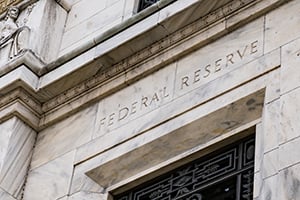 Today’s post will be a brief one as I am on the road. Besides, we don’t yet know how the main event of the day—the Fed meeting—will turn out. Will the Fed cut rates? Drop a strong hint that a rate cut is coming? Or just sit tight? And what will the White House do?
Today’s post will be a brief one as I am on the road. Besides, we don’t yet know how the main event of the day—the Fed meeting—will turn out. Will the Fed cut rates? Drop a strong hint that a rate cut is coming? Or just sit tight? And what will the White House do?
Must-see TV
The whole situation has a reality show feel. The president has been putting the heat on Fed Chair Jerome Powell, with his most recent threats to demote Powell if he doesn’t cut rates. I have to admit, it makes for some must-see TV. Like any great show, you don’t know what is going to happen next. We have two committed protagonists, both acting for what they see as the good. And the cliffhanger—who will prevail? With the regular Fed meetings, we even have a guaranteed renewal for next season!
Back to reality
This is, however, real life, with real consequences—not least for the financial markets. Markets have now priced in multiple expected cuts, starting with today (at least very probably). We talked about headline risk to the upside yesterday. If we don’t get a cut, or at least a strong hint that one is coming soon, markets are likely to react negatively. When markets want something, they can throw a tantrum when they don’t get it. This type of reaction would only exacerbate the White House’s pressure on the Fed.
Yet, in my opinion, the economic data doesn’t justify a cut—and the Fed’s stance seems to support that. The Fed has indicated it will cut when necessary but hasn't actually indicated it is necessary. With inflation still at reasonable levels and with other indicators healthy, a cut could be justified but certainly isn’t mandatory.
Powell’s legacy on the line
Which takes us back to politics, of a sort. Jay Powell came into office, so it was said, opposed to keeping the Fed put on markets going. The Greenspan, Bernanke, and Yellen puts (i.e., where the Fed rescued languishing markets with rate cuts) was supposed to be dead. Powell said as much, many times, but then seemed to change his mind on the last pullback.
As such, if he caves again this time, in at least apparent response to political pressure, the Powell put will be perceived as every bit as strong as those of the previous chairs. More, by giving in to political pressure, he will have eroded the Fed’s independence. In many ways, the first draft of his legacy, and certainly the perception of the rest of his chairmanship, is on the line here.
What will the Fed do?
Because of this perception and because the data doesn’t really justify an immediate cut, I suspect the Fed will sit tight, at most reiterating its willingness to cut when needed.
A market reaction is likely, but it should be moderate. The message, after all, will be that things are not actually that bad—and that the recovery continues. If the Fed believes that, it should cheer markets, along with all of us. But if the Fed doesn’t believe the recovery continues? Then a rate cut may actually end up being bad news, even if it cheers the markets in the short term.


 Print
Print

